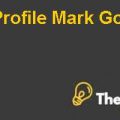Htc Corp Case Study Solution
Quantitative Analysis
HTC’s average sale price competed well with Blackberry, but it was overly expensive as compared to Samsung. In 2011 HTC’s average sale price of US$313 was way ahead of Samsung’s $146. As it was over expensive with lesser features, people preferred Samsung due to its greater affordability. Though since 2008, the HTC lowered its prices relative to both Apple and Samsung. Exhibit 2 shows the price comparisons.
Analyzing HTC’s financials it has been revealed that the company hasn’t been able to fully utilized its assets. From 2008 to 2011, the company’s return on assets went from 18.3% to 19.32%. Though, the company improved its performance meant that it was earning 19.32 cents on every $1 assets that was installed in the company. Either the firm had to sell of its assets or it needed to make better use of them. Furthermore, company had decent ROE of 70.34%, which meant that on $1 invested by the shareholders, the company was earning 70 cents. This was one of the positive signs from the firm and revealed that the company’s management were doing a commendable job in using the shareholders wealth. Moving on, HTC maintained lower level of current liabilities as compared to current assets. The current liability to current assets ratio of 0.597 gives an indication that the company was highly liquid. The current liabilities could be quickly paid off using the current assets.
Key Issues
In moving forward the company has to address some key issues that might create problems for the company’s coming future. The top management has to resolve them sooner rather than later. The key issues are discussed below:
- With negative performance for the 2011’s last quarter, HTC soon realized that its cost of production was increasing with passing period. Surge in cost forced the company to increase their selling price which might not be liked by the customers. As company relied on customization strategy, it resulted in additional cost for the firm.
- HTC growth was soon hindered by the fierce competition from the rival firms. In order to combat the rivalry. Companies like Apple was going strong with their operating system and attracted huge customer base. Therefore, HTC had to market itself differently as such it could gain a greater market share. A shrewd differentiation strategy would mean better product positioning to increase customer perception for the devise.
- As Google and Microsoft partnered with other companies, HTC had to design a strategy that could put the firm at the driving seat.
- Also, as Motorola and Nokia were using the Android and Microsoft operating systems, respectively. HTC wondered if it should go with other operating system or create one of its own.
- The tablet business wasn’t doing well for the company, but HTC looked ways to revive the tablet business.
- As HTC had already lost its patent war with Apple, it had to improve its IP strategy.
Alternatives/Recommendations
HTC worried for differentiation and to combat this key issue the company looked towards getting attention from media outlets and servicing. A better marketing strategy would mean that the company had to invest heavily on the advertisement. By doing so, they would create closeness with the audience. As people would get more familiar with the new HTC devise, they would flock to buy its smartphones.
Apart from this, the team developed HTC sense, which could customize user’s home screen. Giving it a more personal look, the company make sure that the customers are getting an email-focused interface whenever they are off to work in weekdays and back to social media-focus interface when enjoying the weekends. By placing all the social network accounts at one place called “friend stream”, HTC made it easier for the users to view friends activities and they were able to post the updates at one go.
To save its cost of production, HTC’s top management realized that it can save the almost 10% of its billing cost by reducing the number of models. With an average product life cycle of 9 months, HTC had 50 different models which were thought to have created the burden on company’s financials. The alternative looks to be strong, as companies like Apple have already tested with this experiment. The company has limited phone collection and does quite well with it. Exhibit 3 shows the decision weighted model
Conclusion
HTC Corporation established itself as a tablet making company but soon found itself in the smartphone manufacturing. The company enjoyed a lean period but soon it saw decline in its profitability. Starting off with the Microsoft operating system, HTC had to switch to Google’s Android operating system. As Google and Microsoft helped other mobile manufacturers, HTC had to face a tough competition from a group of rivals. Sooner rather than later it had to devise a strategy to combat the growing threat from the other firms. It had to make sure it is differentiating its product better than its rivals. The company also had to get a control over the tablet market to regain its lost shine.
In order to do so, the company reduced its number of products. By reducing the products, the company would reduce the overall cost as well. Hence, re-shaping product portfolio was one of the ideas. The other idea was to work closely with the media outlets to market their product to the masses. Creating an attraction for the people would mean higher sales for the company. Furthermore, the company decided to further customize its product by introducing HTC sense, through which people could customize their home screen.
Exhibits
Exhibit 1
SWOT Matrix
| Strengths | Weaknesses | Opportunities | Threats |
| · Strong diplomatic skills
· Partnership with Microsoft · First ever company to make PDA |
· patent infringement with Apple
· Microsoft operating system proved to be a failure · Limited products |
· Partnering with google for android.
· media content and servicing · touch-screen interface |
· Apple
· Samsung · Nokia |
Exhibit 2
| Companies | 2010 | 2011 |
| Nokia | $ 110 | $ 98 |
| Apple | $ 607 | $ 623 |
| Samsung | $ 118 | $ 146 |
| HTC | $ 350 | $ 313 |
| RIM | $ 330 | $ 305 |
Exhibit 3
| Alternative | Weight | rate | score |
| Product portfolio | 0.5 | 4 | 2 |
| Media servicing | 0.25 | 3 | 0.75 |
| HTC sense | 0.25 | 2 | 0.5 |
| Total | 1 | 3.25 |
This is just a sample partical work. Please place the order on the website to get your own originally done case solution.











